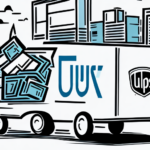Choosing the Right Shipping Supplies for Your Business
Ensuring that your products reach customers promptly and intact is crucial for maintaining a strong business reputation. The appropriate shipping supplies not only safeguard your merchandise during transit but also enhance the customer’s unboxing experience. In this guide, we delve into the essential aspects of selecting the right shipping materials to optimize your business operations and customer satisfaction.
Types of Shipping Packaging
Envelopes: Selecting the Right Type
Envelopes are ideal for shipping small, lightweight items such as documents or small gadgets. They are cost-effective and occupy minimal storage space. Padded and bubble mailers offer extra protection for fragile items, while flat mailers are suitable for non-fragile, flat items like brochures and catalogs. When choosing envelopes, ensure they are made from durable materials to withstand handling and transit conditions.
For international shipments or items prone to rough handling, consider using reinforced envelopes or transitioning to small boxes for added protection. Additionally, opting for envelopes with expedited shipping options can be beneficial for time-sensitive deliveries.
Cardboard Boxes: Advantages and Considerations
Cardboard boxes are the most widely used shipping containers due to their versatility in size and strength. They can accommodate a variety of products, from electronics to apparel. When selecting boxes, consider the size, weight, and fragility of the items being shipped. Corrugated cardboard offers superior durability and protection, making it suitable for heavier or more fragile items.
Cardboard boxes are also an eco-friendly option, often made from recycled materials and recyclable after use. Customizing boxes with your brand's logo can serve as a powerful marketing tool, enhancing brand recognition and customer loyalty.
However, it's important to use additional packing materials like bubble wrap or foam inserts for delicate items and to seal boxes securely with strong adhesive tape to prevent accidental openings during transit.
Essential Packing Materials
Protecting your products during shipping involves more than just selecting the right container. Essential packing materials include:
- Bubble Wrap: Ideal for wrapping individual items to provide cushioning against impacts.
- Packing Peanuts: Fill empty spaces in boxes to prevent movement and reduce the risk of damage.
- Kraft Paper: Offers a biodegradable alternative for cushioning and wrapping items.
- Foam Inserts: Customizable to fit specific product shapes, providing secure placement within boxes.
Opting for eco-friendly packing materials, such as biodegradable packing peanuts made from cornstarch or recycled kraft paper, not only protect your products but also minimize your environmental footprint.
Packing and Labeling Best Practices
Choosing the Correct Size
Selecting the right size of box or envelope is crucial for both protection and cost-efficiency. A container that fits snugly around the product minimizes the need for excessive packing materials, reducing both waste and shipping costs. Overly large boxes increase the chances of items shifting during transit, while too small containers may not provide adequate protection.
Additionally, consider the weight of your shipment. Heavier items require sturdier packaging to support the load without breaking. For international shipments, be mindful of size and weight restrictions imposed by destination countries to avoid unexpected fees or delays.
Understanding Shipping Labels
Accurate and clear shipping labels are essential for ensuring timely and correct delivery. A proper shipping label should include:
- Recipient’s full address, including postal code
- Sender’s address and contact information
- Recipient’s and sender’s phone numbers
- Tracking number and barcode corresponding to your carrier
For international shipments, include all necessary customs information such as the value of the contents, country of origin, and any applicable tariffs or taxes. Incorrect or incomplete labeling can lead to delays, additional fees, or the return of packages.
Utilize carrier-specific shipping labels and ensure they are printed clearly and affixed securely to prevent them from peeling off during transit.
Packing Fragile Items
Shipping fragile items demands extra precautions to prevent damage. Follow these best practices:
- Use double-boxing: Place the item in a smaller box with cushioning, then place that box inside a larger one with additional padding.
- Wrap items individually with bubble wrap or foam inserts to provide multiple layers of protection.
- Clearly label packages as “Fragile” to alert carriers to handle with care.
- Maintain consistent orientation: Use arrows or labels to indicate the correct handling position, preventing the package from being dropped or mishandled.
Implementing these strategies significantly reduces the risk of damage, ensuring that your delicate items reach customers in pristine condition.
Cost-Effective Shipping Strategies
Saving on Supplies and Postage
Managing shipping costs is vital for maintaining profitability. To reduce expenses:
- Buy in Bulk: Purchasing shipping supplies in large quantities often results in significant discounts.
- Reusing Packaging: Reuse materials like bubble wrap and packing peanuts from incoming shipments for outgoing packages.
- Shredded Paper: Utilize shredded paper or old newspapers as an economical cushioning alternative.
- Online Shipping Tools: Leverage online discounts offered by carriers and print shipping labels from your office to save on transportation costs.
Many shipping carriers offer business discounts for frequent shippers or those who commit to large volumes. Additionally, investing in shipping software can provide access to lower postage rates and streamlined shipping processes.
Comparing Carriers and Shipping Options
Not all shipping carriers offer the same services or pricing structures. To find the most cost-effective and reliable option:
- Research Carrier Specializations: Some carriers excel in international shipping, while others may offer better rates for domestic or heavy items.
- Compare Rates and Delivery Times: Evaluate different carriers based on their pricing tiers and the speed of their delivery services to match your business needs.
- Evaluate Customer Reviews: Assess carrier reliability and customer satisfaction through reviews and industry reports.
Popular carriers like USPS, FedEx, and UPS offer a range of services catering to different shipping requirements. Selecting the right carrier can lead to significant savings and improved delivery performance.
International Shipping Essentials
Expanding your business globally requires a thorough understanding of international shipping protocols. Key considerations include:
- Customs Regulations: Each country has specific import regulations, duties, and taxes. Ensure all shipments comply with these requirements to prevent delays or refusals.
- Accurate Documentation: Provide detailed product descriptions, accurate valuations, and complete customs forms to facilitate smooth clearance.
- Prohibited and Restricted Items: Verify that your products are allowed in the destination country to avoid legal issues and shipment rejections.
Utilize resources from organizations like the U.S. Customs and Border Protection to stay informed about international shipping laws and best practices.
Tracking, Monitoring, and Customer Service
Best Practices for Tracking and Monitoring
Implementing robust tracking systems enhances transparency and customer trust. Benefits include:
- Real-Time Updates: Provide customers with tracking numbers to monitor their shipments’ progress.
- Analytics and Reporting: Use tracking data to identify delivery trends and address potential bottlenecks.
- Proactive Issue Resolution: Monitor shipments for delays or issues and take swift action to inform customers and rectify problems.
Advanced shipping software can integrate tracking information directly into your order management system, offering seamless updates and improved operational efficiency.
Customer Service: Handling Shipping Issues
Even with meticulous planning, shipping issues may occur. Effective customer service strategies include:
- Prompt Communication: Respond quickly to customer inquiries and provide regular updates on shipment status.
- Flexible Solutions: Offer refunds, replacements, or reshipments in case of lost or damaged packages.
- Feedback Mechanisms: Encourage customers to provide feedback on their shipping experience to identify areas for improvement.
Maintaining a responsive and solution-oriented customer service approach can turn shipping challenges into opportunities for building stronger customer relationships.
Sustainable Packaging Solutions
As environmental concerns gain prominence, adopting green packaging solutions is becoming increasingly important for businesses. Benefits include:
- Reduced Environmental Impact: Use recyclable, biodegradable, or reusable materials to minimize waste and carbon footprint.
- Enhanced Brand Image: Demonstrating a commitment to sustainability can attract environmentally conscious customers.
- Compliance with Regulations: Adhere to evolving environmental regulations and standards in different markets.
Options for sustainable packaging include:
- Recycled Cardboard: Made from post-consumer waste, it reduces the demand for virgin materials.
- Biodegradable Packing Peanuts: Derived from natural sources like cornstarch, they break down easily without harming the environment.
- Air Pillows: Manufactured from recycled materials, they offer cushioning while being eco-friendly.
Investing in sustainable packaging not only benefits the planet but can also lead to cost savings and meet the growing demand for eco-friendly business practices.
Conclusion: The Importance of High-Quality, Reliable Shipping Supplies in Today's Marketplace
Selecting the appropriate shipping supplies is fundamental to the success of your business operations and customer satisfaction. From choosing the right type of packaging to implementing efficient shipping strategies, every decision impacts the safety of your products and the overall customer experience. Prioritizing high-quality, reliable shipping materials ensures that your products arrive intact and on time, fostering trust and loyalty among your customer base. Additionally, embracing sustainable packaging solutions can set your business apart in a competitive marketplace, appealing to the environmentally conscious consumer.
Investing in the right shipping supplies is not just about protecting your products; it's about building a reputable and resilient business poised for growth in today’s dynamic and demanding market landscape.




















